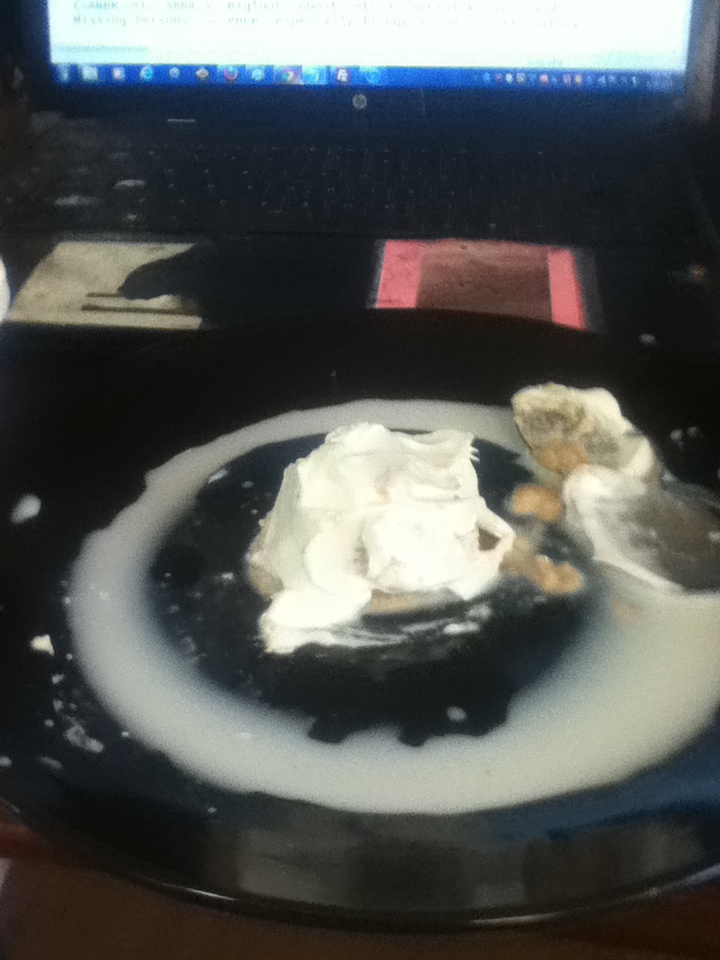
:

:

:

:

:

:

:

:
TOC (Table Of Contents)AmyStrange.org and the UNeXpLaiNed ©Copyrighted by Dave Ayotte & Caty Bergman
OUR BLOG: 2013 JUN
|2012|JAN|FEB|MAR|APR|MAY|JUN|JUL|AUG|SEP|OCT|NOV|DEC|2014|
JUN-07-2013 [FRI] 17:36 PDT - PROBABILITIES
JUN-29-2013 [SAT] 13:37 PDT - IN POT WE CREATE
BLOG: JUN-07-2013 [FRI] 17:36 PDT Table Of Contents
PROBABILITIES
Before we get into this month's BLOG (BLG), let me tell you about our
last action packed adventure. It was literally like watching grass
grow (no pun intended). Check it out:
INDOOR GARDENING: Growing Marijuana (Cannabis)
Now back to our regularly scheduled program.
PROBABILITIES
If you've read enough of this BLOG (BLG) or our website, you know that
me and Dave mention probabilities a lot. Mostly to counter Dave's
wild theories or stories.
If you were a fly on the wall, you'd hear me ask, "Now, how probable is
that, Dave? I mean really? More probable than this other theory that
passes Occum's Razor?
Occum's Razor is a kind of a probabilities meter. The answer to a
question, or mystery, more likely than not is the one that makes the
fewest assumptions. But, and even the skeptics dictionary agrees
with me here, just because one answer makes less assumptions than
another, don't always make it the right one. Any assumptions
eliminated with Occum's Razor should not be tossed out like
yesterday's garbage, at least not until they are proven false. I'm
going to add "proven false absolutely" to that, because some people
seem to think that because it don't pass the "Razor" test, that
alone is enough to prove it false.
There is nothing wrong with being a skeptic, but if you're not also
skeptical of your own beliefs, than you're just a biased observer,
and not a real skeptic. Science should do the same thing, but that's
a whole 'nother discussion, for a whole 'nother time.
I'm not going to give you a probabilities lecture here (or anywhere for
that matter) with all kinds of math to go with it, but I will teach
you something practical about probabilities by explaining my point
of view using penny poker as a kind of entertaining way of doing it.
Let's start with the penny part first. Here are the ten coin flips we
made (T = Tails, H = Heads):
(01) T
(02) H
(03) T
(04) H
(05) H
(06) T
(07) H
(08) H
(09) T
(10) T
Anyway, "Occum's Razor" and probabilities are OK as a far as they go,
and to us it's a way to begin our discussions or our research, but
reality has a way of laughing at the "razor" and probabilities...
sometimes.
What that means is probabilities don't mean a wit per incident. Let's
take our penny example above. As most of you probably know, the
probabilities of flipping either heads or tails with each flip of
any two sided coin is fifty-fifty (based on two possible outcomes,
divided by one flip), and even though that probability will always
be fifty-fifty, that is only before you flip, not after. The
probabilities after you flip are still the same, or so you would
think.
The general consensus amongst statisticians is that probabilities don't
only apply to each individual flip, but also to each set of flips,
and the more flips, the better your chances are that all your flips
will be equal to the fifty-fify probability. For example, with our
first five flips, the odds are not evenly fifty-fifty, but more like
sixty-forty in favor of heads, and in the second set of five flips,
that is reversed, making the overall set fifty-fifty again. What
that means to me is that in actual practice, if the result of a set
of flips is the same side in consecutive throws, the more flips your
set includes, the more it will conform to the overall fifty-fifty
probability structure.
For example, if heads is the result of five flips in a row, with each
new flip the probabilities go up that the result will be tails
instead of heads. But regardless of all that, no matter how many
times in a row your flips result in the same side coming up, the
probability for the next flip will always be fifty-fifty,
regardless. Ain't statistics and probabilities fun?
But penny probabilities are small change (pun intended) compared to the
Big Mama of game probabilities, and I'm not talking about bones
(dice), but poker.
I'm not going to get into any kind of mathematical probabilities
lecture about how to calculate the chances for being dealt each
specific hand of poker. Instead, let's talk about the king of poker
hands (excluding hands with wild cards, cards that can represent any
card in the deck), the Royal Flush, Ace high. I don't think there is
anyone out there that doesn't know the probabilities for being dealt
such a hand are very high (depending on how you do the calculations,
it is approximately either 640,000 to 1, or 30,000 to 1). If you
want to know more about how the probabailities and odds for poker
are calculated, check this page out at Wikipedia:
http://en.wikipedia.org/wiki/Poker_probability
In conclusion: even though the odds at getting a Royal Flush, Ace high,
are really high, people still get them. Logically that should also
mean (no matter how high the probabilities are) that flipping
consecutive heads hundreds of times in a row, or that UFOs really
are from other worlds, or that Sasquatch really is real; all those
things are also possible, despite the probabilities against them.
BLOG: JUN-29-2013 [SAT] 13:37 PDT Table Of Contents
IN POT WE CREATEFollow @AmyStrange_org LAST UPDATED: July 6, 2013
:

:

:

:

:

:

:

:
MAY <<<< 2013 >>>> JUL